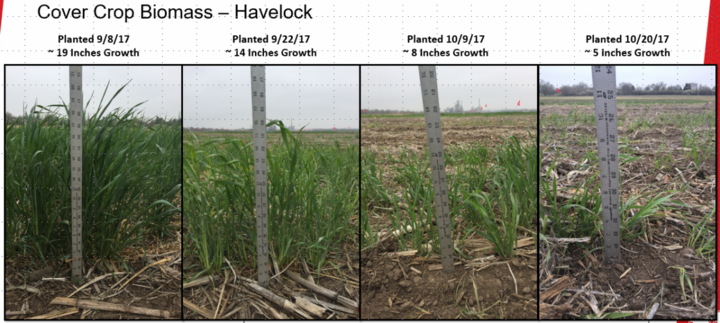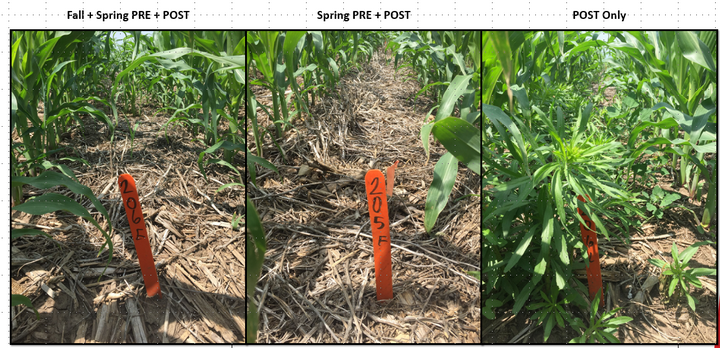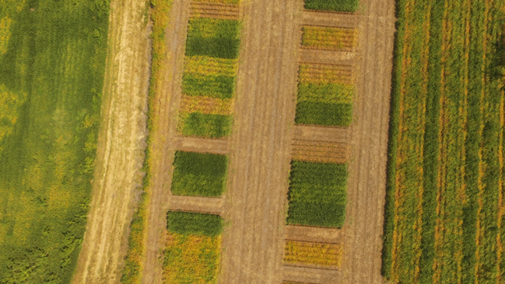Cover crops are a growing component of the Nebraska agricultural landscape. Many farmers rely on cover crops for their potential benefits like soil erosion control, post-season capture of plant available nutrients, and improved soil health. In addition, cover crops have been shown to be effective at suppressing weeds in many agricultural systems; however, results are not always consistent and often depend upon several variables including environmental factors, weed species present, and management practices used.
As weed suppression is highly related to cover crop biomass production, it can be a challenge in Nebraska corn-soybean crop rotations as the growing season following harvest is relatively short. One approach to extend the fall growing season for cover crops is by using shorter season corn or soybean maturity groups. This concept has been used effectively in the mid-South United States, but has not been well utilized in the Midwest.
The objective of this study was to determine the effect of soybean maturity group yield, cover crop planting date, termination date, and herbicide program on winter- and summer-annual weed suppression in a corn (Zea mays L.) and soybean (Glycine max L.) cropping system.
Field trials were conducted in 2017-2018 at the UNL Havelock Research Farm near Lincoln where a cereal rye (Secale cereal L.) and oat (Avena sativa L.) mix was planted at 80 lb/acre.

There were four cover crop planting dates following soybean harvest
- September 8
- September 22
- October 9
- October 20
Two termination dates were used prior to corn planting.
- April 10
- April 27
Herbicide treatments were:
- Fall burndown (Clarity 16 fl oz/ac) + Spring preemergence (PRE) (Acuron 3 qt/ac + glyphosate 32 fl oz/ac) + postemergence (POST) (Status 10 fl oz/ac + glyphosate 32 fl oz/ac)
- Spring PRE (Acuron 3 qt/ac + glyphosate 32 fl oz/ac) + POST (Status 10 fl oz/ac + glyphosate 32 fl oz/ac)
- POST (Status 10 fl oz/ac + glyphosate 32 fl oz/ac)
Results


Results from Year 1 of the study indicate that:
- Cover crop planting and termination date had no effect on weed biomass or weed density.
- Herbicide treatments containing a fall burndown did not reduce weed density or biomass more than spring PRE treatments, but both reduced weed density and biomass more than the control before the POST application.
- Fall burndown and spring PRE treatments also provided greater weed control than postemergence-only treatments three weeks after the POST application.
- There was no difference in soybean yield for maturity group 2.0 and higher.



Summary
These results indicate that cover crops may not always be successful at providing effective weed suppression. Managing weeds when they are small and using a spring residual or fall-applied herbicides may be necessary to provide adequate weed control for the duration of the growing season. In addition, there is potential to use earlier maturity group soybean to increase the fall season for cover crop establishment and growth without detrimentally impacting yield.
Funding Source
This research was supported by USDA Foundational Grants Programs A1102 (Grant no. 2017-67013-26256 /project accession no. 1011811) from the USDA National Institute of Food and Agriculture.

